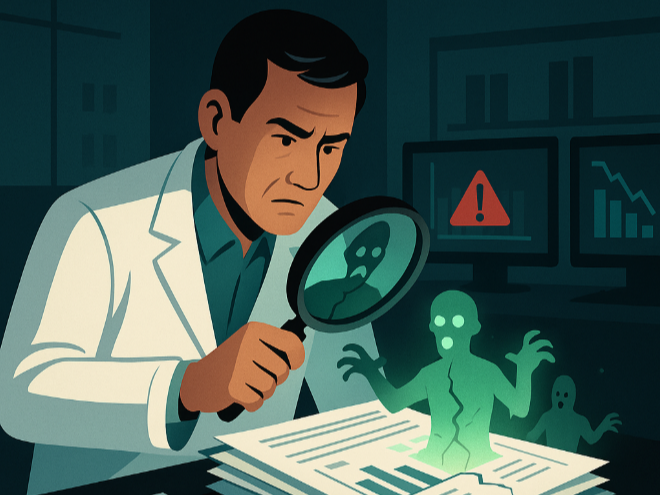Untrustworthy Clinical Trials: A Biostatistician’s Wake-Up Call

As a biostatistician, the findings in a recent Nature article stopped me in my tracks. We all trust randomized controlled trials (RCTs) as medicine’s gold standard, but this July 2023 a Nature piece revealed an unsettling truth: a shocking number of published RCTs may be deeply flawed or even fraudulent. In the article, Dr. John Carlisle – an anesthesiologist and journal editor – analyzed 500+ clinical trial manuscripts and uncovered statistical anomalies on a staggering scale.
Stunning Findings from 500+ Trials
Carlisle’s deep-dive into trial data uncovered red flags in nearly half of the studies he reviewed. By obtaining raw patient datasets for over 150 trials, he found that 44% contained impossible or inconsistent statistics, and 26% were so fundamentally compromised that their results couldn’t be trusted at all. In other words, about one in four RCTs in this sample was essentially a fake or fatally flawed study. He dubbed these “zombie trials” – studies that look like real research on the surface, but are hollow shells underneath. Even Carlisle was taken aback by how many zombies he found (he expected perhaps 1 in 10, not 1 in 4). Each zombie trial had either gross errors or outright fabricated data, masquerading as reliable evidence.
Hidden Flaws and the Way Forward
Carlisle’s analysis showed a dramatic difference in detecting flawed trials when raw data was available versus when it wasn’t. When only summary statistics were available (no raw data), Carlisle could flag just 1% of studies as zombies. With full individual patient data, however, 26% turned out to be zombies – revealing many more fraudulent trials. This stark contrast highlights a critical point: without access to granular data, most of these flaws stay hidden. It’s a worrying blind spot in peer review, since journal editors and reviewers rarely see raw datasets.
Carlisle’s experience carries an urgent warning. He urges journals to “assume that all submitted papers are potentially flawed” and to scrutinize raw data before publishing RCTs. His story also exposes a systemic risk: he rejected every zombie trial he found, yet nearly all of them later found their way into other journals (sometimes with slightly tweaked data). In short, bad data can slip through and pollute the scientific literature, potentially skewing meta-analyses and clinical guidelines that doctors rely on.
As a biostatistician, I find these revelations deeply concerning. This isn’t just an academic issue – if one-quarter of clinical trials can’t be trusted, the consequences for patient care and public trust in research are dire. We must take this as a wake-up call to strengthen research practices. That means greater data transparency, more rigorous validation of trial results, and an unyielding commitment to research integrity. Ensuring that raw data are available for independent verification and encouraging a culture of honesty in reporting aren’t just lofty ideals, but necessary steps to safeguard the quality of evidence. Let’s use these findings as motivation to double-check the data behind the headlines and uphold the trust that modern medicine is built on.
Reference article: https://www.nature.com/articles/d41586-023-02299-w
